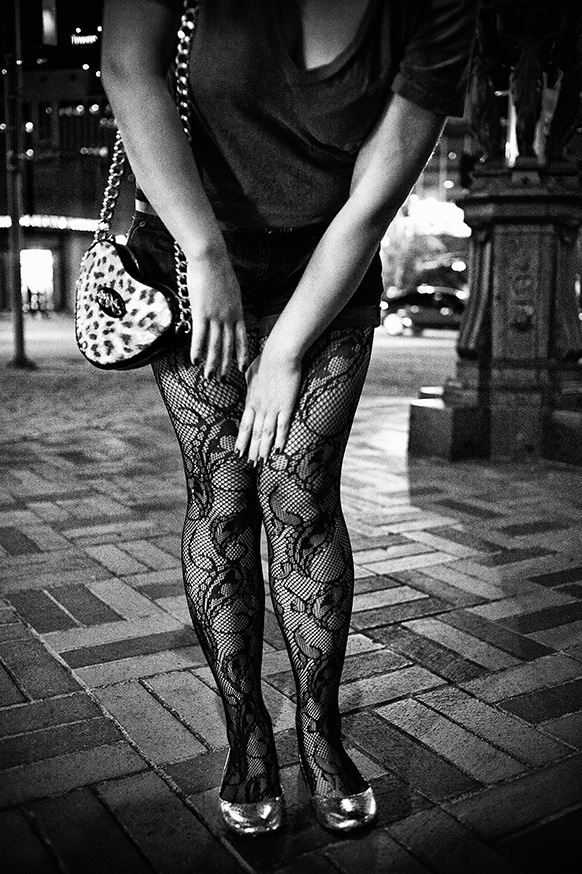
Like many of you, I was raised with the idea that when you take portraits you say things like; "Chin up, eyes forward, and look into the camera." For many years when shooting adults this seemed to work just fine, then I went to Korea for a year. For some strange reason it seems a whole lot harder to coach a person, if you don't speak the same language. Sure I went through the motions; gesturing with my hands, and speaking louder and slower. Don't ask me why Americans think louder and slower will magically make others understand a language they never spoke before. But eventually; I stopped trying to change the subject, and realized I was the foreigner here. I had to change how I was shooting.
I shot many informal portraits while in Korea, by just waiting and watching. I learned how to be invisible. When you become invisible, the subject forgets that you are there and starts interacting with his or her surroundings again. To this day, the best smiles I have ever captured on film or digital media were of those who either didn't know or forgot that I was there.
A friend once stated, "So in a way you were forced to become a street photographer." Up to that point; I had never thought of myself as a street photographer, so I started trying to define what makes a good street photographer. Street photography is often described as a series of shared moments, either with others or with the environment.
A distinguishing feature of good street photography is finding the extraordinary in ordinary places. Much of the great photography of the Time/Life era was street photography. It is to a certain degree, Zen photography at its best. You do not focus on the technical side of photography, you focus on life. You wait for that brief moment in time, and then you capture it on film or digital media for time and all eternity.
More than anything else, street photography is a state of mind. Now that I have defined it, I realize much of my wedding photography was shot in street photography style. Yes, I always brought a list of traditional shots. Things like: Bride and Groom Kissing, Bride and Groom cutting the cake, Bride throwing the Bouquet were my traditional photography shots. But what got my work remembered were my "Street shots".
Photographs of: little bride's maids smelling flowers, mother whispering wisdom in the brides ear, or the Big Mac the groom had hidden under his chair in the reception line were prime examples of "Street Photography."
Besides the obvious benefit of capturing memories for your viewer, becoming invisible and shooting from the heart is much less stressful for the photographer. You have not announced your intentions to the world, so all that remains is for your client to be pleasantly surprised. You do not worry about getting it "Just Right", ideally you don't worry at all, and you simply focus on the moment. Pay attention to details of what's happening around you. What you are looking for, is what most everybody else has missed. You are saving memories that others may not have had, unless you had been there.
Since the examples I have used so far are wedding shots, obviously Street Photography does not have to be done in the streets. It is a style, a way of thinking and viewing the world around you. If you were shooting a basketball game for example; it would mean including something beyond the game itself. Audience reactions, a cheerleader grabbing her pom-poms while laughing; a three year old on the sidelines pretending to shoot the ball are all examples of going beyond the assignment and thinking outside the box. If like me, you had never thought of yourself as a street photographer before, try it sometime. You might surprise yourself, and your viewer.
Award winning writer / photographer Tedric Garrison has 30 years experience in photography. As a Graphic Art Major, he has a unique perspective on the Elements of Design and how they relate to photography. His photo eBook; Finding Your Creative Edge in Photography, proves creativity CAN be taught. Tedric shares his wealth of knowledge with the world, at: Better Photo Tips.com
Article Source: http://EzineArticles.com/?expert=Tedric_Garrison
Article Source: http://EzineArticles.com/2231008

Aucun commentaire:
Enregistrer un commentaire